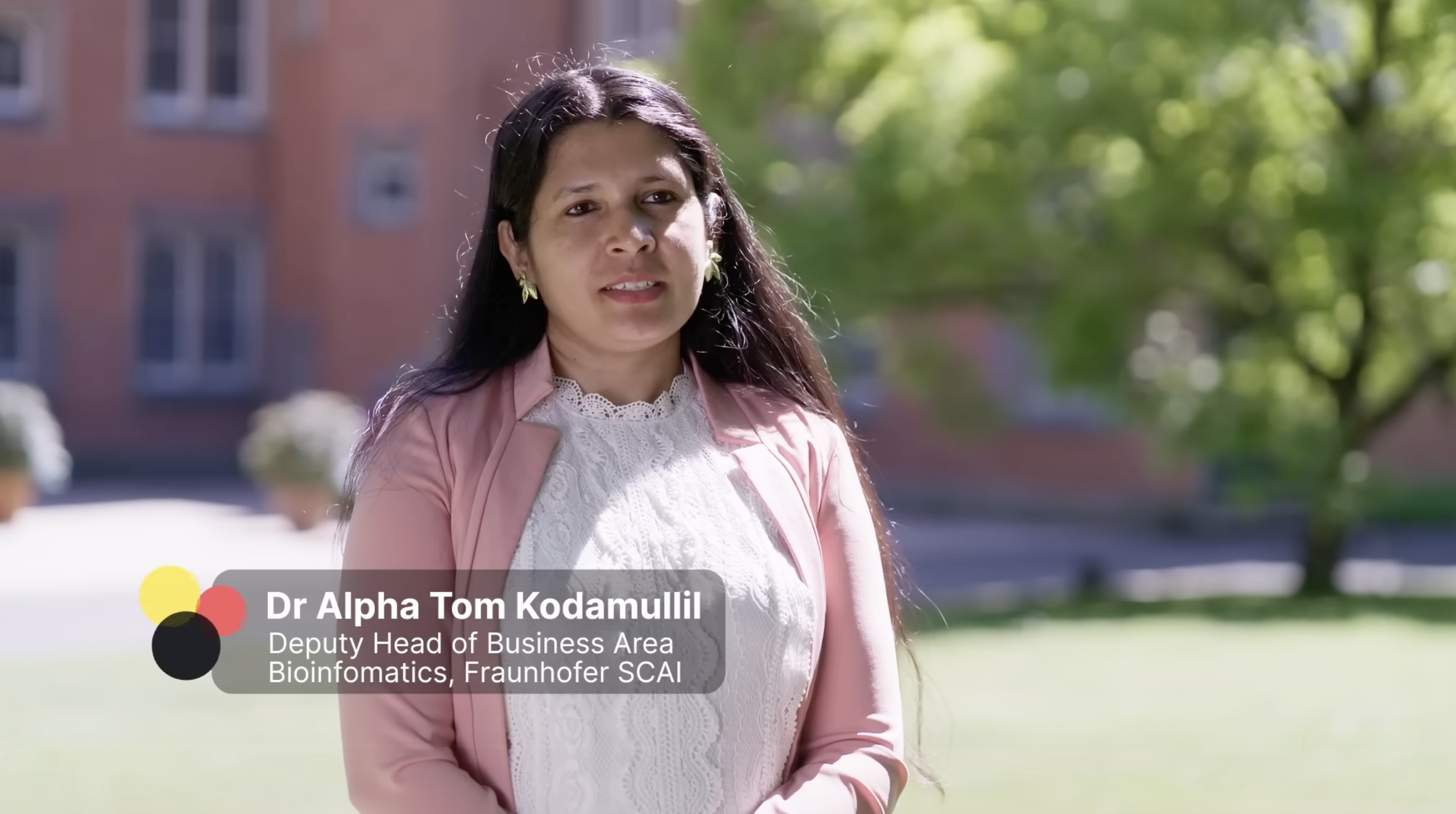Using AI to decode Alzheimer’s: Fraunhofer researcher Alpha Tom Kodamullil leads the way
Alzheimer’s disease is considered one of the most complex diseases of our time. At Fraunhofer SCAI, Dr. Alpha Tom Kodamullil is using artificial intelligence and natural language processing to search for new approaches to personalized therapy. A recent short film on “deutschland.de” provides insights into her research work at the intersection of bioinformatics, artificial intelligence, and medicine.
Sankt Augustin – Alzheimer’s doesn’t follow one path. For Dr. Alpha Tom Kodamullil, that’s a challenge and an opportunity. As head of the Applied Semantics group at Fraunhofer SCAI and deputy head of the Bioinformatics Department, she’s working at the intersection of bioinformatics, artificial intelligence, and data-driven medicine.
In a recent short film released by "deutschland.de", Kodamullil explains her core mission: using artificial intelligence (AI) and natural language processing to connect scientific knowledge with real-world patient data. She aims to identify new ways to treat Alzheimer’s by repurposing existing drugs and tailoring care to each patient.
Alzheimer’s is a very heterogeneous and multifactorial disease
“Alzheimer’s is a very heterogeneous and multifactorial disease,” she explains in the film. “Each individual is getting Alzheimer’s by various causative mechanisms.” That complexity, she explains, requires a new research approach that blends clinical data with insights mined from unstructured sources like scientific literature.
Kodamullil’s team is deploying generative AI and semantic models that extract meaning from massive volumes of research. The results could reshape how doctors understand and treat neurodegenerative diseases.
Her work doesn’t stop in Germany. In 2018, she founded Causality Biomodels, a Fraunhofer SCAI spin-off based in Kerala, India. The startup focuses on making biomedical data “AI-ready” by ensuring its quality and structure. “We always want high-quality data and knowledge for our research purposes,” she underlines.
Germany is the hub of cutting-edge research and innovation
Kodamullil credits Germany as the ideal place for her research activities. “Germany is the hub of cutting-edge research and innovation,” she says. National and EU-level funding programs support early-career researchers like herself, and institutes such as Fraunhofer create strong bridges between science and industry. “It’s a very nice environment linking academics with the industry,” she adds.
The film highlights not just the technology behind her work but also the vision that drives it: using advanced tools to better understand one of the world’s most complex diseases and improve patients’ lives.
The film is available on YouTube https://www.youtube.com/watch?feature=shared&t=215&v=PWhZP_R3n7I
